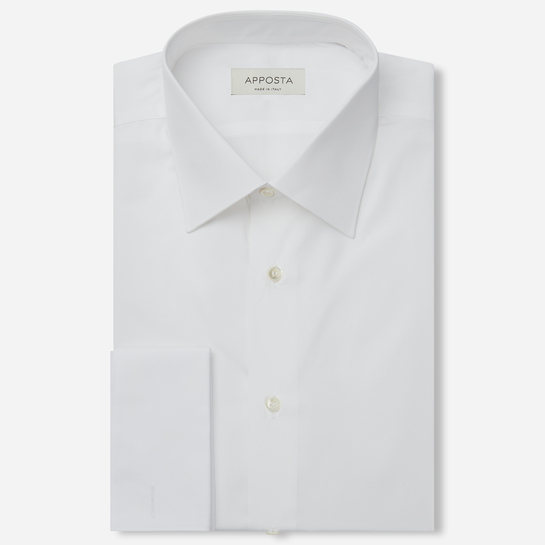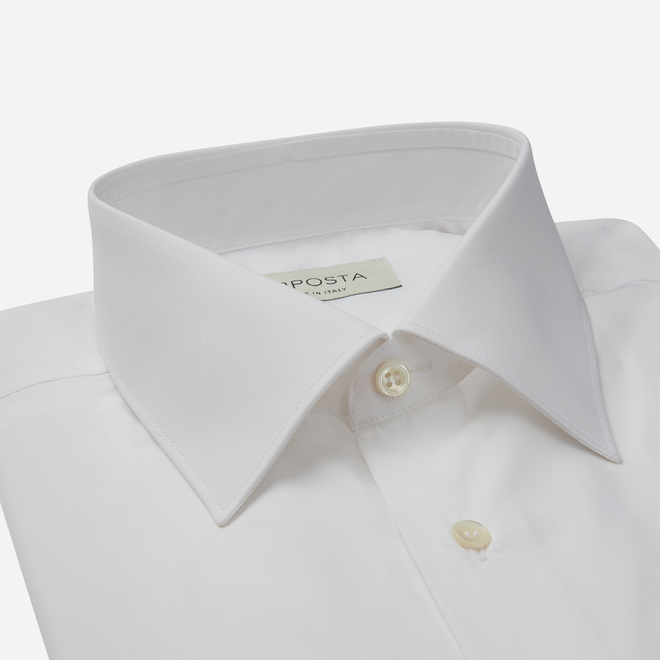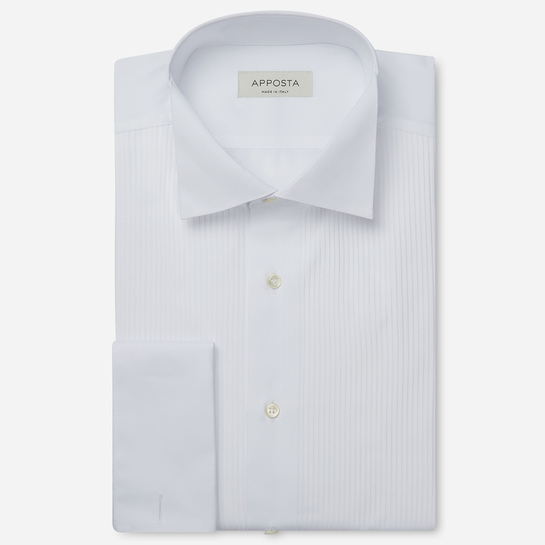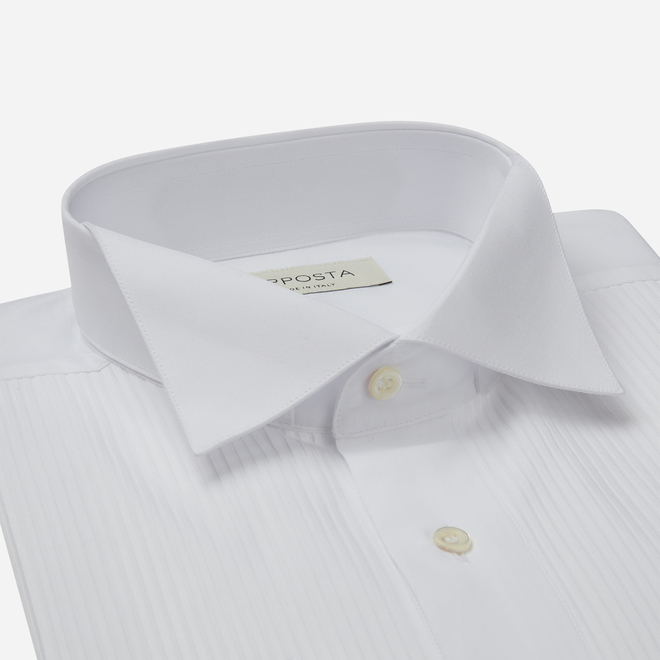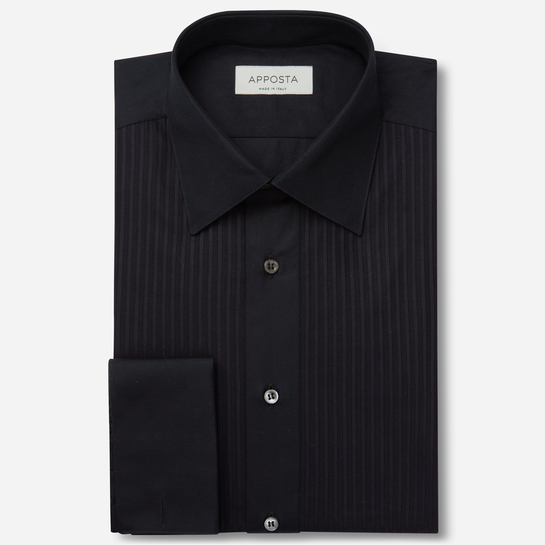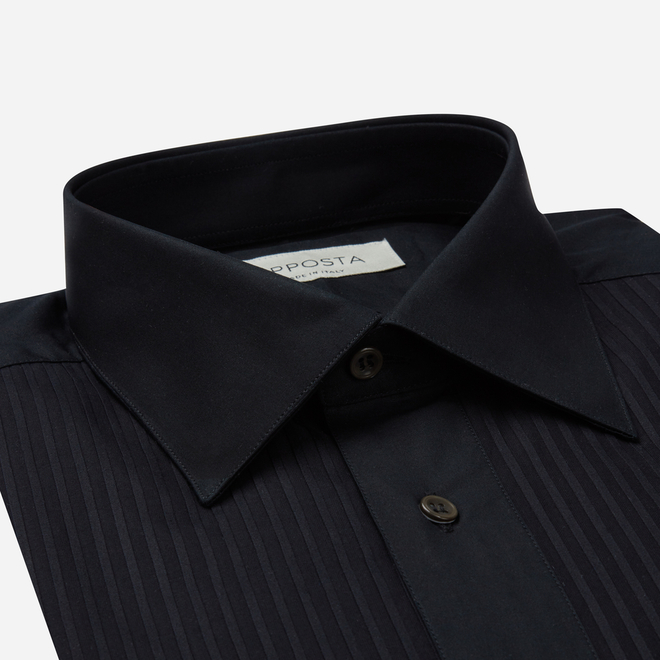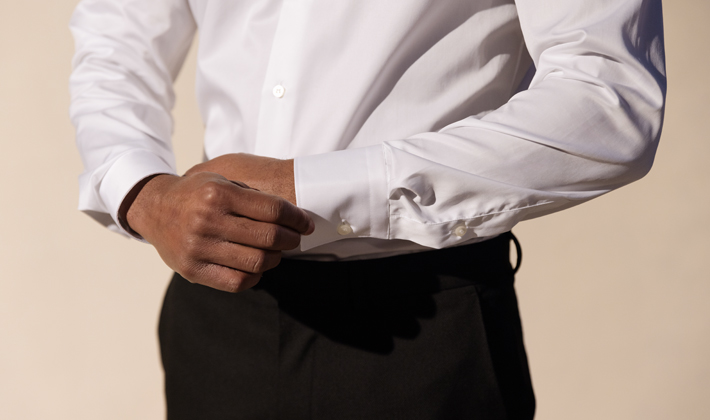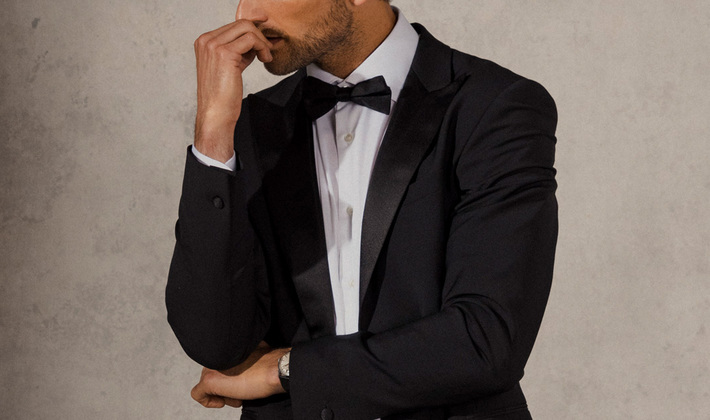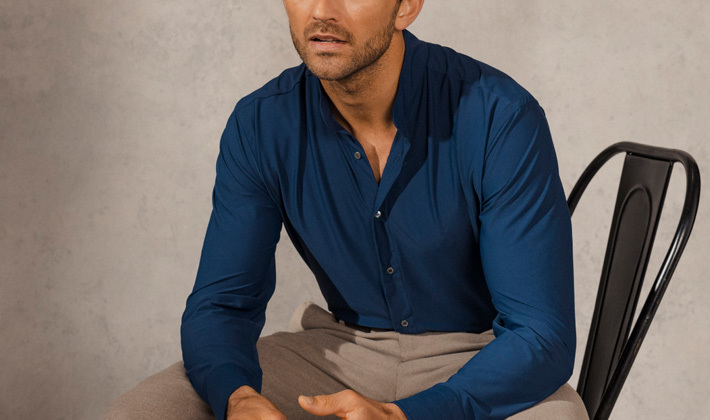French Cuffs For Shirts - A Complete Guide
From what they are to how to wear them, discover everything you need to know about French cuffs
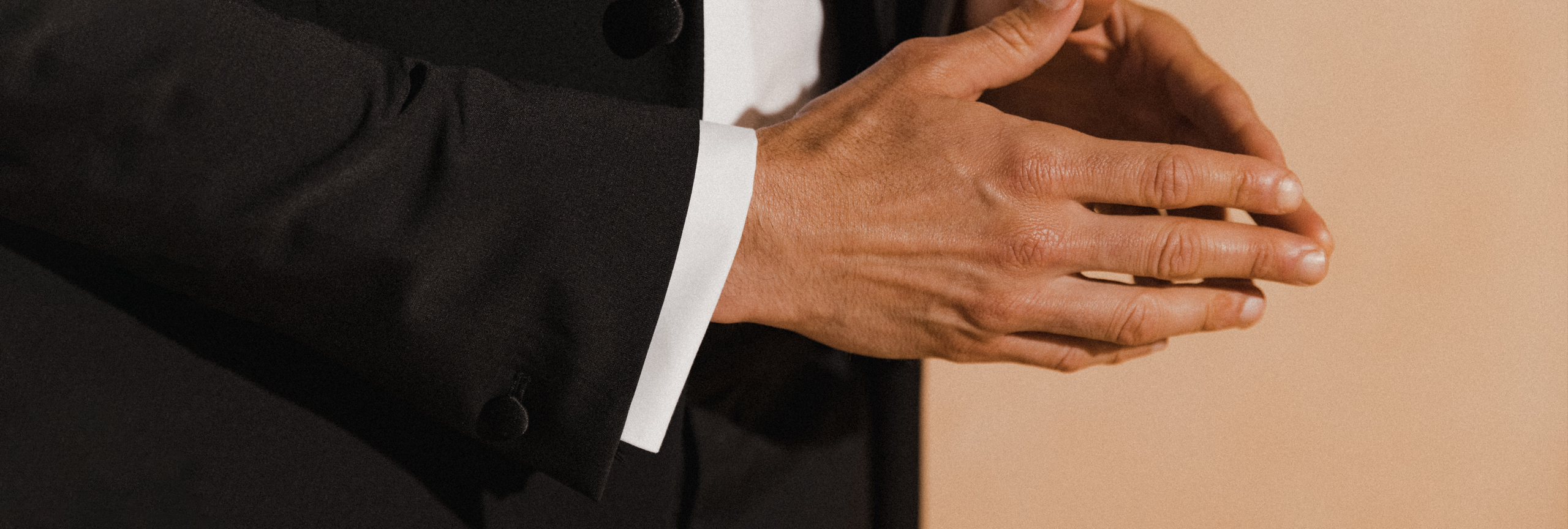
French cuffs (also known as double cuffs, or link cuffs) are a design feature for formal dress shirts. You can select this cuff style when you are creating an Apposta custom-made shirt.
What Are French Cuffs?
French cuffs are a type of formal shirt cuff. They are twice as long as typical cuffs and fold back onto themselves. This creates an elegant fabric roll at the top of the cuff. French cuffs do not have buttons. Instead, each French cuff has 4 button holes which line up when the cuff is folded. These holes allow cufflinks to pass through to fasten the cuff. Apposta French cuffs are the 4 buttonhole style.
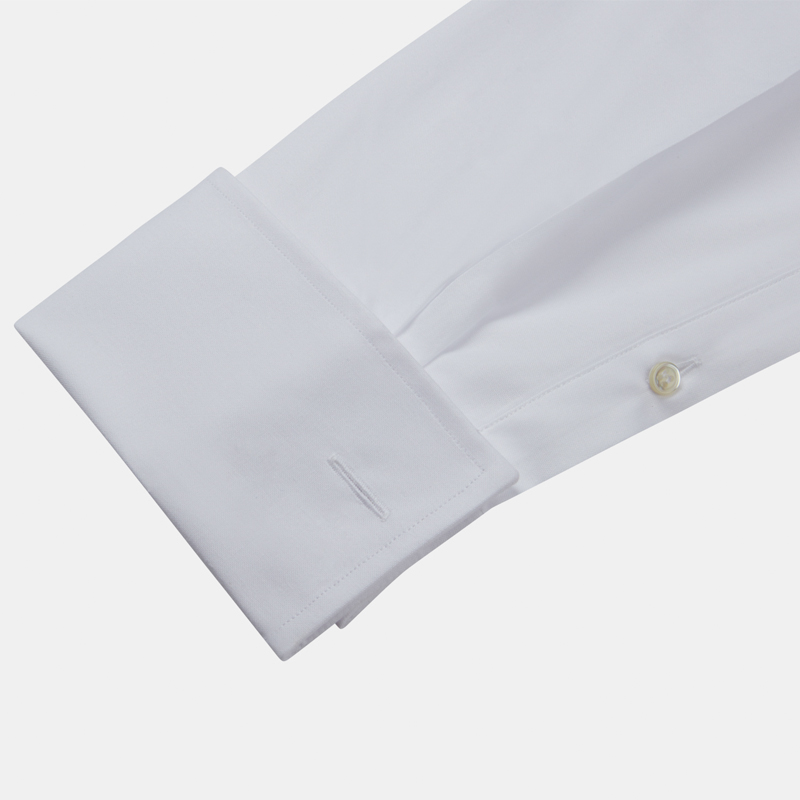
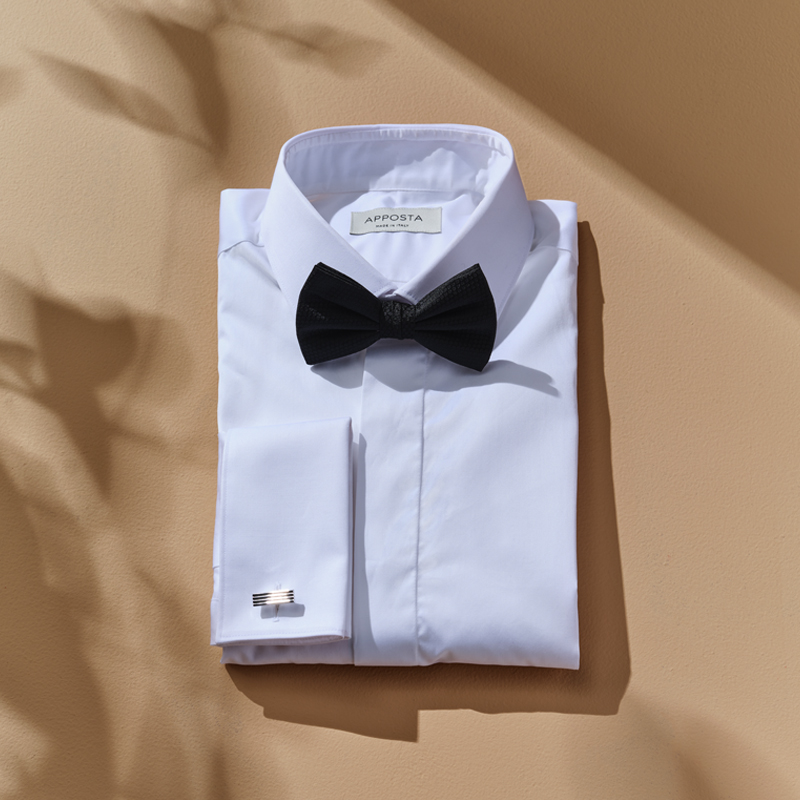
What Are The Benefits of French Cuffs?
Add Formality
French cuffs are synonymous with refinement and sophistication. They are the preferred choice for black tie events, weddings and some business settings.
Show Personal Style
The cufflinks used to fasten French cuffs come in a vast array of styles, materials, and designs. They provide the opportunity to personalise your shirt and show your style.
Show Attention To Detail
By wearing French cuffs, you can demonstrate your ability to pay attention to details. This can leave a favourable impression on others.
When to Wear a French Cuff Shirt
French cuff shirts (or double cuff shirts) are formal. This means that they should be worn in specific settings. Here is a list of when it’s most appropriate to wear a shirt with French cuffs:
Weddings
For grooms, groomsmen or guests, French cuffs will convey elegance and attention to detail.
Black Tie Events
Charity galas, award ceremonies and other upscale events call for French cuff shirts. This is because the cuff style complements tuxedos and bow ties.
Special Occasions
French cuff shirts can be worn for anniversaries, milestone birthdays, or opera and theatre nights. As a general rule, if the event is special enough to need a tie, a French cuff shirt can be worn.
Professional Settings
In certain industries (such as finance or law) French cuffs may be part of the required dress code. They communicate attention to detail, traditionalism and a refined demeanour.
French cuff shirts can be worn during interviews for high ranking job roles. Similarly, they may be worn for meetings with very important clients.
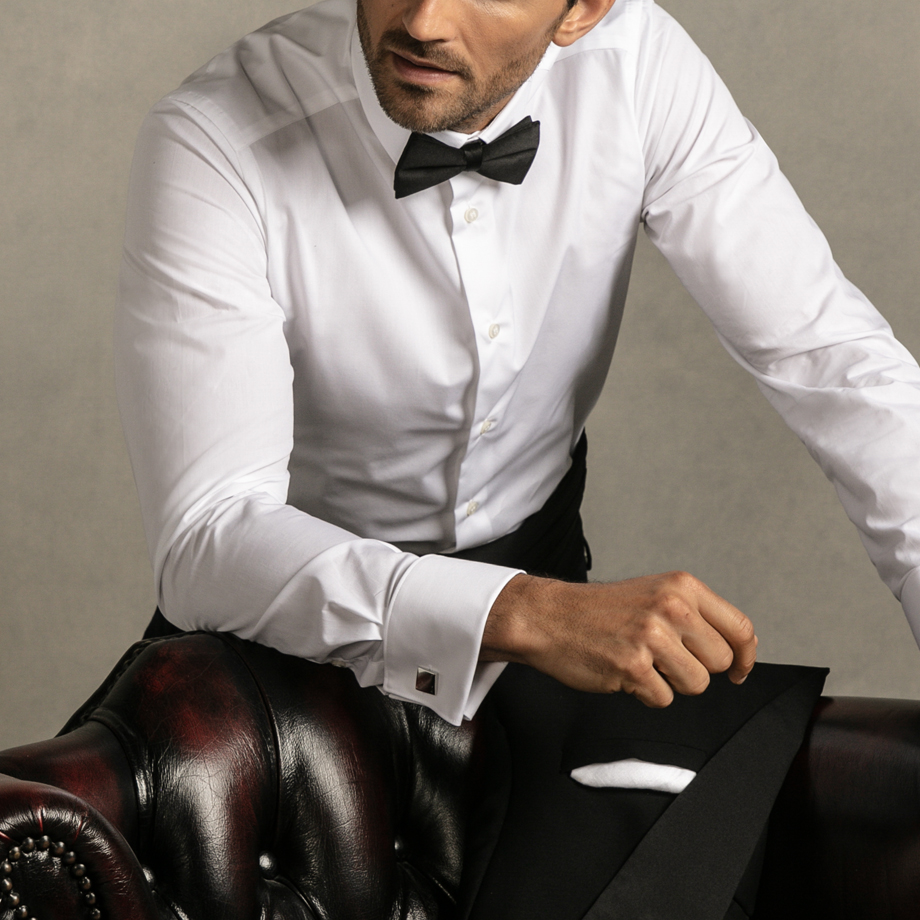
The History of French Cuffs
French cuffs are believed to have originated in Europe during the 16th century. They were originally held together with ribbons or buttons. Their exact country of origin is contested. Some claim that French cuffs originated in Britain and were known as foldback, turnback or double cuffs. According to this theory, the name 'French cuffs' was popularised in America during the 1930s. An alternative theory claims that French cuffs were once worn by French nobility, hence their current name.
What Is the Difference Between French Cuffs and Convertible Cuffs?
As well as French cuffs, we offer convertible cuffs which you can use when creating a custom-made shirt. Both styles can add formality to a shirt. They differ in their level of formality and features:
French Cuffs
- Have a double layer of fabric that folds back on itself.
- Have no buttons.
- Must be fastened with cufflinks.
- Are more suitable for very formal events.
- Are less suitable for casual settings.
- Can be fastened as barrel cuffs or face to face cuffs.
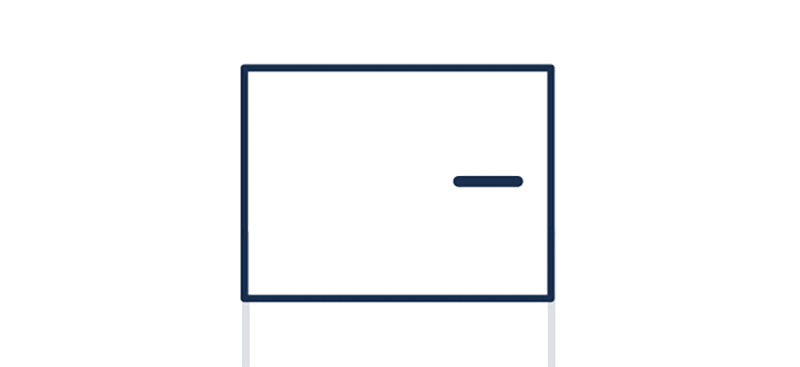
Convertible Cuffs
- Have a single layer of fabric.
- Can be worn with buttons.
- Can be worn with cufflinks.
- Are less formal than French cuffs.
- Are more suitable for professional or casual settings.
- Are less suitable for very formal events.
- Can be fastened as barrel cuffs or face to face cuffs.
- Less bulky than French cuffs, suitable when jacket sleeves are tighter than usual.
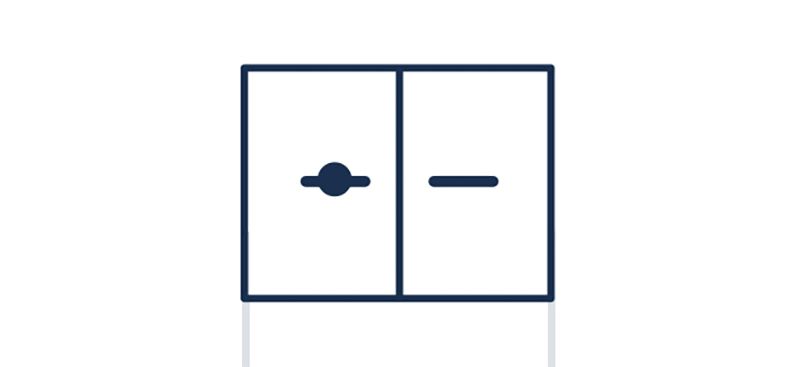
What Are Cufflinks and Do I Need Then for French Cuffs?
Cufflinks are specialised fasteners that secure the cuffs of French cuff shirts. They pass through aligned buttonholes on each side of the cuff. They consist of an outward decorative face, a post to thread through the buttonholes and a mechanism to secure the cuff. As well as serving a functional purpose, cufflinks enable you to express your style.
Cufflinks are essential for fastening French cuff shirts.
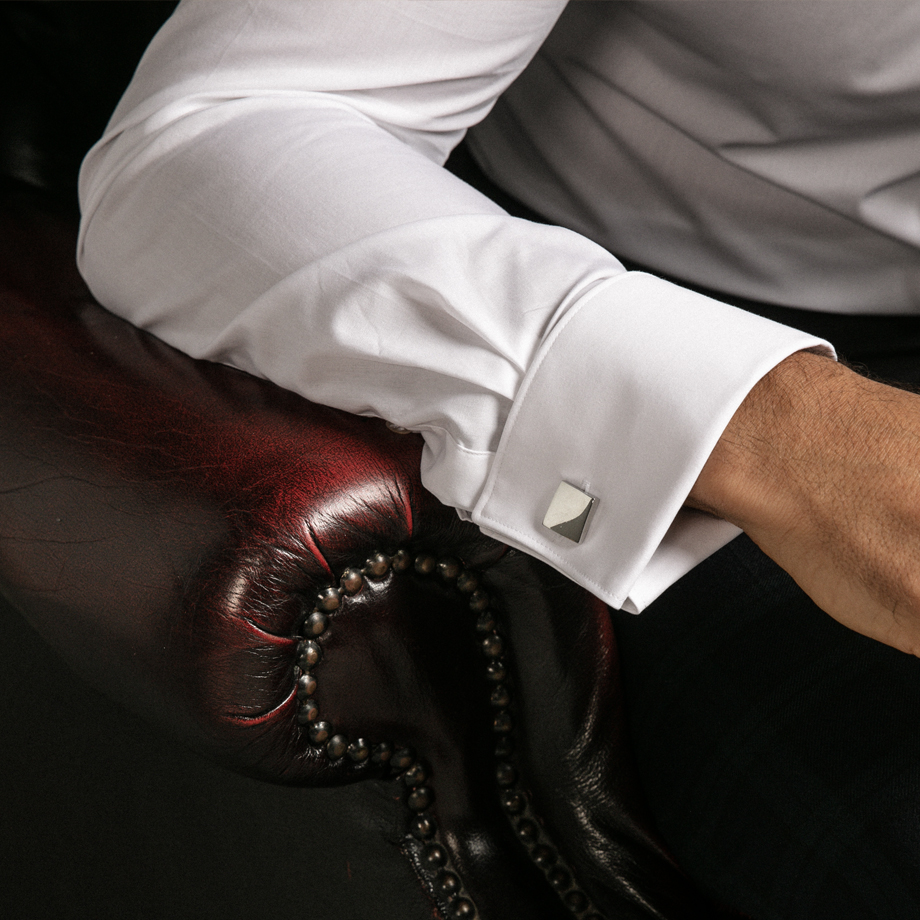
How to Wear Cufflinks With French Cuffs
Wearing French cuff shirts can seem daunting. By following this step by step guide you can learn how to put on cufflinks to fasten your French cuffs with ease.
Face to Face Fastening
The most popular way to fasten French cuffs is by using the ‘face to face’ method. This entails that the inner sides of each cuff get pressed together ‘face-to-face’. For the vast majority of occasions, this is the preferable and most formal way to fasten French cuffs.
- Put on your French cuff shirt leaving the cuffs open.
- Using the natural halfway crease as a guide, fold one cuff back towards your body. (Ensure the buttonholes on each side of the cuff now align)
- Using your opposite hand, pick up a cufflink.
- Push the cufflink through the pair of holes by your outer wrist.
- Push the cufflink through the cuff’s second set of buttonholes without bending the cuff back on itself.
- Secure the cufflink’s mechanism if necessary.
- Repeat the process for the other cuff.
Barrel Fastening
For a more contemporary way to wear a French cuff shirt, you can try the ‘barrel cuffs’ technique. This method creates an overlapped cuff finish. The result is a slimmer and less formal fastening.
- Put on your French cuff shirt leaving the cuffs open.
- Using the natural halfway crease as a guide, fold one cuff back towards your body. Ensure that the buttonholes on each side of the cuff align.
- Take the cuff edge next to your little finger then place it in front of the other cuff edge.
- Line up all 4 buttonholes.
- Push your cufflinks through all 4 aligned buttonholes. (The decorative face of the cufflink should be visible on the outside of your cuff)
- Secure the cufflink’s mechanism if necessary.
- Repeat the process for the other cuff.
Types of Cufflinks to Wear With French Cuffs
There are many styles of cufflinks which you can use to fasten French cuffs. Different styles offer different appearances and levels of tightness.
Here are the main varieties which you can choose from:
Bullet Back Cufflinks
Bullet back cufflinks feature a decorative face and a post frame. The post frame contains a small, rotating "bullet." This bullet aligns with the frame and allows the cufflink to pass through buttonholes. The bullet is then rotated 90 degrees to secure the cuff. This style of cufflinks is the most popular due to its ease of use and tight fastening.
Whale Back Cufflinks
Whale back cufflinks feature a flat head, a fixed post and an adjustable "whale back" hinge at the end. This whale back can lay flat against the post for easy insertion through the cuff's buttonholes. The whale tail can then be flipped away from the post. This creates a small, rectangular bar that secures the cufflink.
Fixed Back Cufflinks
Fixed back cufflinks have no moving parts. They have a smaller end which can fit through a French cuff’s buttonholes and a larger decorative end. They are a traditional cufflink style.
Ball Return Cufflinks
Ball return cufflinks feature 2 rounded ends. Typically one end is larger and serves as the decorative face. The smaller end usually acts as the back of the cufflink. They need no adjustment and provide a simple way to fasten your French cuffs. Ball return cufflinks offer a looser fastening than hinged cufflinks.
Chain Cufflinks
Chain link cufflinks are a traditional style featuring 2 decorative faces. The faces connect with a short length of chain. This style of cufflink offers a looser fastening that both hinge and fixed cufflinks.
Silk Knot Cufflinks
Silk knot cufflinks feature 2 knots joined together by a cord. This type of cufflink is an informal option and is the least durable cufflink type.
How To Style French Cuff Shirts - Colours, Materials & Cufflinks
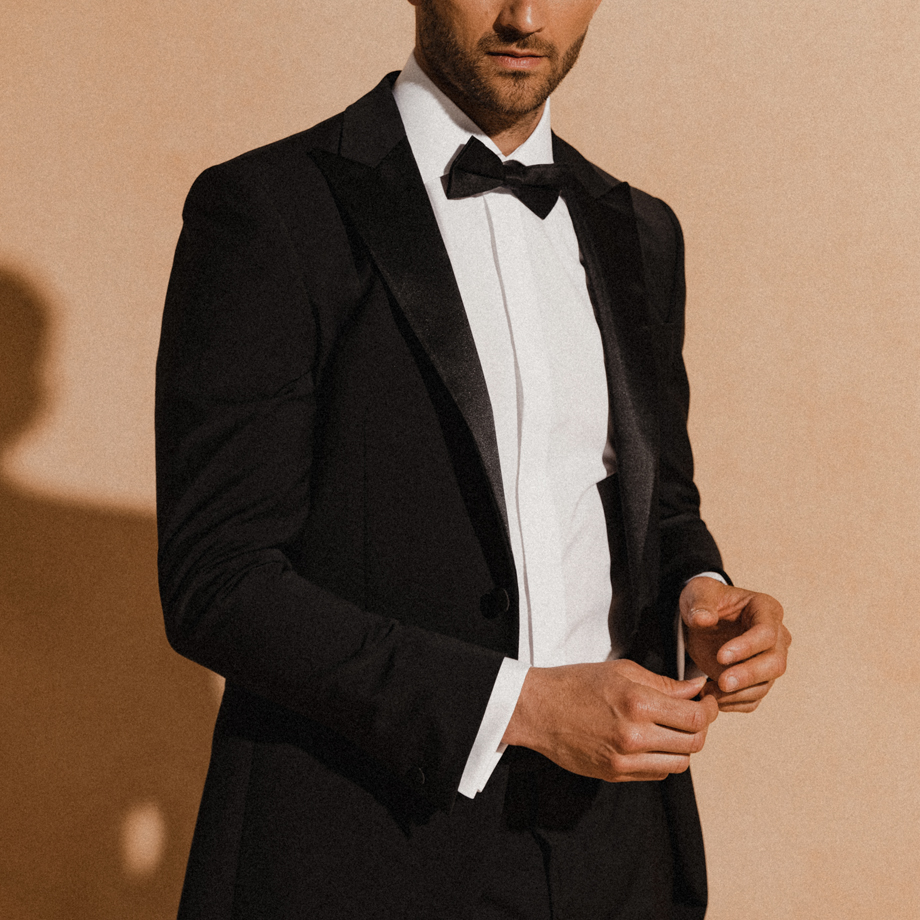
Shirt Colour
White French cuff shirts are the safest option when wearing cufflinks. This is because a white shirt is least likely to cause issues with clashing colours and designs. A pale blue French cuff shirt is also relatively neutral. By choosing a white or blue French cuff shirt, you have more freedom over the style of cufflink which you choose.
Cufflink Design
If in doubt, opt for a simple cufflink design. Novelty cufflinks designs (such as those adorned with cars or golf balls) are best avoided. Simple designs will help to accentuate your French cuffs without being ostentatious.
Metallic Cufflinks
If you’re wearing metallic cufflinks match the type of metal to the metal of your other accessories. For example, if your belt buckle is silver, choose silver cufflinks rather than gold ones. If you are not confident about colour matching outfits, opt for metallic cufflinks. Metallic cufflinks will blend with a wide variety of shirts and suits more easily.
Colourful Cufflinks
Cufflinks which have a colourful design should match other clothing and accessories. For example, if your French cuff shirt has a blue stripe design, a pair of cufflinks with a blue design will match. If you are wearing a green tie, a pair of cufflinks with a green design will match your tie. If your socks are navy, a pair of navy cufflinks will match your socks. Do not add a random colour of cufflinks. Your aim should be to create a colour match with some other aspect of your outfit.
Precious Stone Cufflinks
Cufflinks which feature gemstones are only appropriate for the most formal occasions. Designs which feature diamonds, pearls, rubies can be worn at white tie events.
Read our guide to types of shirt cuffs for more information about the various men’s shirt cuffs you can select when creating a shirt.
